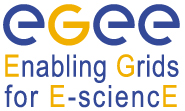Speaker
Describe the added value of the grid for your activity, or the value your tool or service adds for other grid users. This should include the scale of the activity and of the potential user community, and the relevance for other scientific or business applications.
ArchaeoGRID is focusing the research on:
a-the historical factors leading to global change and to biodiversity crisis by the integration of humans and ancient societies history with the Earth system history. Grid technologies will make possible such new approach.
b-the origin, growth and collapse processes of past societies and the interactions of the environmental and human processes that have contributed to determine such human and environmental dynamics. Multispatial and temporal scales, requiring a very high computing power, will need in such cases of study.
c-the social, environmental and economical processes leading to the emergence of the city and the state.
Added value of ArchaeoGRID is also a better insight of anthropic influence on environmental changes in Earth Sciences and a rigorous test-bed for validating dynamic models of social processes in diverse contexts and study outcomes at different temporal and spatial scales in Social Sciences.
Report on the impact of the activity, tool or service. This should include a description of how grid technology enabled or enhanced the result, or how you have enabled or enhanced the infrastructure for other users.
Archaeological ( historical ) data are geospatial and temporal data. Preservation, management, analysis and visualisation of archaeological geospatial data need the integration of a large number and types ( files-, SQL-, XML-, etc.) of databases distributed geographically and of a distributed Geographic Information System ( GIS ) on Grid Infrastructure – the archaeological GridGIS -.
Multi-Agent System ( MAS) and GIS must be integrated on Grid Infrastructure for the simulation of social, economical and ecological dynamical processes in ancient societies. Also Digital Libray and Visualization Facility will be used for production of internal reports and for the final narration.
A paleoclimate application is running on GILDA t-Infrastructure and on EUMEDGRID e-infrastructure. The ArchaeoGRID System could be used for economical exploitation of the Archaeological Heritage by the interested users ( tourist agencies, media, land management companies, etc.).
Describe the activity, tool or service using or enhancing the EGEE infrastructure or results. A high-level description is needed here (Neither a detailed specialist report nor a list of references is required).
ArchaeoGRID project is based on the Grid paradigm, a new way of sharing resources in multidisciplinary and interdisciplinary collaboration between researchers in sciences and humanities. It aims to produce an integration of history of humans and ancient societies with history of the Earth. It can become the new medium for cognitive process in Archaeology and for advancing in archaeological knowledge unification and integration through the use of advanced Grid technology.




